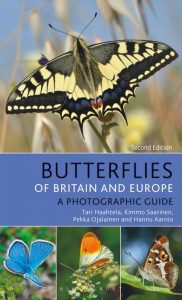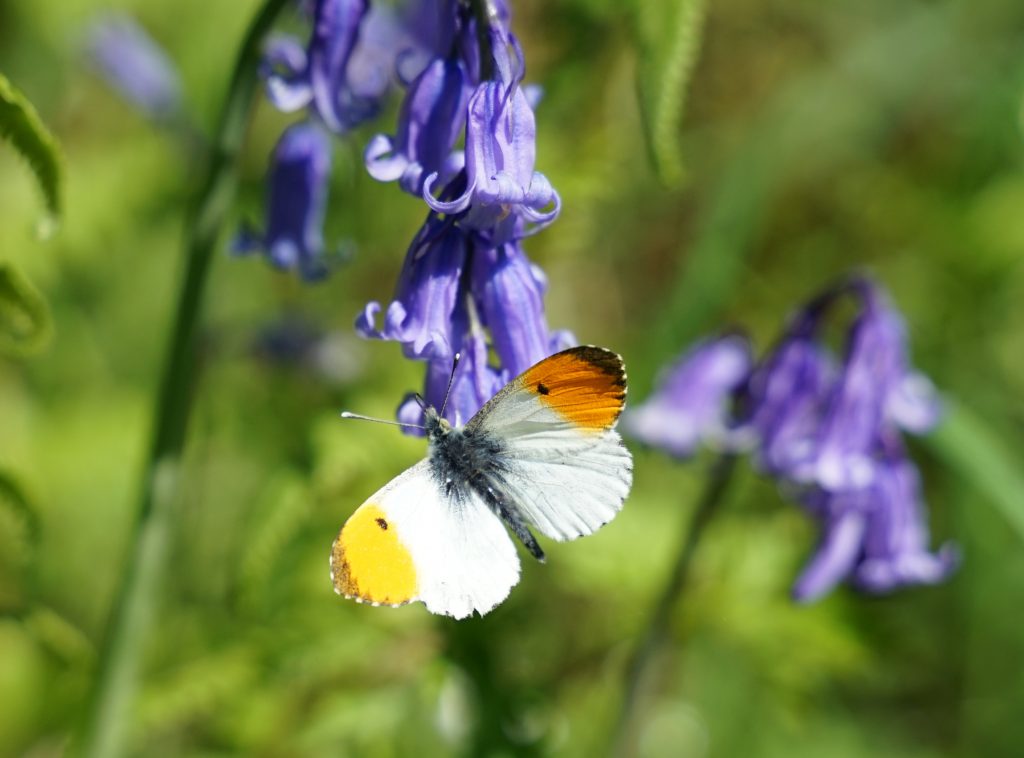
Butterflies are an iconic and popular sight during the spring and summer months. They are also important indicators of a healthy ecosystem and provide valuable environmental benefits such as pest control and pollination. As food for birds, bats and other mammals they are a vital part of the food chain and have been used for centuries by scientists to investigate navigation, pest control and evolution, as well as countless other subjects.
In the UK there are currently 57 resident species of butterfly and two regular migrants. Of these, it is estimated that 76% have declined in abundance, occurrence or both over the past 40 years. Almost all of these losses can be attributed to man-made changes such as habitat destruction and pollution, along with larger patterns of weather and climate change.
Recording and monitoring butterflies is a vital step in ensuring their conservation. Contributing to citizen science projects such as Butterfly Conservation’s Butterflies for the New Millenium, the UK Butterfly Monitoring Scheme, or via the iRecord app are vital to gain a picture of how our butterflies are faring. Although at this time it is not possible to travel to survey and record butterflies, sightings within your garden or on your own land, as well as those spotted on local walks, still provide a valuable source of data. (Please read the most recent Covid-19 statements on each of these websites before undertaking any surveys.)
In this article we have compiled a short guide on which butterflies you are likely to see outside this spring/summer, as well as some tips on the features by which you can distinguish certain species.
Gardens
For many butterflies we need look no further than our back gardens. In the UK many generalist species of butterflies survive and thrive in the network of gardens that stretch out across the country. These species are drawn in by the bountiful supply of nectar offered by flowering plants such as Buddleia, which are seldom without a visiting Red Admiral or Peacock. Gardens with unmanaged patches are even more favourable, as these can provide larval host plants such as thistles and nettles, the latter of which are used by four different butterfly species.
LOOK OUT FOR:
1. Large White: Large and often found near brassicas and nasturtiums
2. Small Tortoiseshell: Medium-sized, often bask in open sunny spots
3. Red Admiral: Large and territorial with unique black and red colours
4. Painted Lady: Large fast flyers with very angular wings
5. Small White: Medium-sized with yellowish under-wings, eat brassicas
6. Peacock: Large, dark butterfly with distinct eyespots on its wings
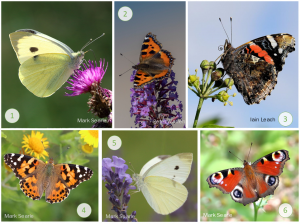
Grasslands, Parks and Fields
Grasslands are an incredibly valuable habitat for many of the UK’s moths and butterflies. Semi-natural grassland, pasture, arable land, urban parkland and any areas with rough unmanaged grass will all support a variety of butterfly species. In the height of summer these areas can be teeming with Skippers, Common Blues, Ringlets and Meadow Browns. Be sure to inspect any flowering plants (particularly thistles and knapweeds) as these can act as vital nectaring points for many butterflies. Pay close attention for the fast and subtle movements of smaller species as these can often disappear against such a busy environment. A prime example of this is the Small Copper which is notoriously hard to spot due to its minute size, fast flight and discrete colouration (when its wings are closed).
LOOK OUT FOR:
1. Meadow Brown: Very common, with dull orange patches on the wings
2. Green-veined White: Have a distinct green colour around the wing veins
3. Small Copper: Small and fast, has deep brown and bright orange wings
4. Common Blue: Small with a vivid blue colour and unbroken white border
5. Six-spot Burnet (moth): Has distinct pattern, often feed on Thistles
6. Ringlet: Common, wings can appear black and have distinct yellow rings
7. Marbled White: Large slow flyers with a unique chequered pattern
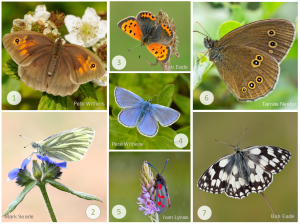
Hedgerows and Woodland-Edge
Edge habitats are well known for their butterfly diversity and abundance, housing many threatened and elusive species. There are a few species which you are likely to see in these areas, however, bear in mind that species such as the Brimstone, Speckled Wood and Gatekeeper can also occur in several other habitats. Sunny areas with flowering shrub such as Bramble are hotspots for activity, particularly for Gatekeepers. Holly Blues may be hard to spot as they are mostly arboreal, only descending to feed on flowering plants such as Ivy. Woodland interiors are unlikely to yield many butterflies, particularly those with little light and/or limited forest floor plants, however open sunny glades are worth visiting.
LOOK OUT FOR:
1. Brimstone: Large with a powdered yellow/green colour and slow flight
2. Comma: Large with a uniquely scalloped wing edge and fast flight
3. Gatekeeper: Small size, often found around hedges with bramble growing
4. Holly Blue: Very small, flying around tree tops, especially those with Ivy
5. Speckled Wood: Medium size, very territorial and regularly sun bask
6. Silver-Y (moth): Fast flying with a distinct silver ‘Y’ on the upper wing
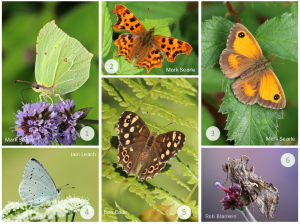
Butterfly Conservation
Thanks to Butterfly Conservation for letting us use their images throughout this article. For more information on UK butterflies and how you can help them, please visit Butterfly Conservation.org. Here you will find a wealth of information to help you find and identify butterflies and moths.
Butterfly Field Guides
 Guide to the Butterflies of Britain and Ireland
Guide to the Butterflies of Britain and Ireland
#245262
The illustrations in this guide, from originals painted by Richard Lewington, show 58 British butterfly species. The paintings are a quick identification aid to the butterflies most likely to be seen and all are drawn to life size.
 Pocket Guide to the Butterflies of Great Britain and Ireland
Pocket Guide to the Butterflies of Great Britain and Ireland
#245485
This handy pocket-sized book has become the essential guide to identifying the butterflies of Great Britain and Ireland. It contains over 600 superb illustrations of the life stages of each species, together with beautiful artworks of butterflies in their natural settings.
Butterflies of Britain and Europe: A Photographic Guide
#245243
Packed with beautiful photography, this is the definitive guide to all 482 species of European butterflies (42 more species compared to the first edition) with additional information on over 60 species found in the far east of Europe, stretching as far as the Urals and Caucasus.
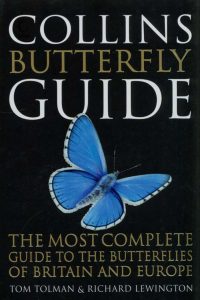 Collins Butterfly Guide
Collins Butterfly Guide
#173624
This comprehensive guide describes and illustrates about 440 species, depicting both males and females and – where there is significant variation – subspecies. Distribution maps accompany every widespread species.
 The Butterflies of Britain & Ireland
The Butterflies of Britain & Ireland
#245487
Provides comprehensive coverage of all our resident and migratory butterflies, including the latest information on newly discovered species such as the Cryptic Wood White and the Geranium Bronze. The definitive book on the subject, it includes fully updated distribution maps.
 Field Guide to the Caterpillars of Great Britain and Ireland
Field Guide to the Caterpillars of Great Britain and Ireland
#248267
This beautifully illustrated field guide covers caterpillars of the moth and butterfly species that are most likely to be encountered in the British Isles.







